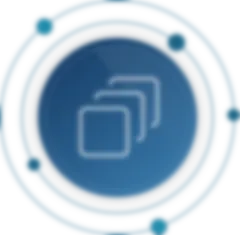AB Inbev
Brewing up the best consumer experience



We knew we wanted to embark on a cloud journey, and Talend was built in that world, enabling cloud and on-premises systems to talk to each other in a secure manner.
Create a unified platform for data coming from diverse acquired companies
Over 100 systems
integrated into a single data solution
75% reduction
in development time, from 6 months down to 6 weeks
One single platform
doing the job that used to take 23 separate ELT tools
Anheuser-Busch InBev SA/NV (AB InBev) is a Belgian publicly traded transnational beverage and brewing company, with a heritage that dates back more than 600 years. Because executives at the company couldn’t readily get access to the enterprise-wide information necessary for strategic decisions, AB InBev had to take a different approach.
“We recognized that we needed one central repository for our data assets,” says Harinder Singh, Global Director of Data Strategy & Solution Architecture. “Our internal customers — data scientists, operations teams, and business teams — were struggling to pull together data from over 100 source systems, analyze it, and make timely decisions on product development, supply chains, marketing campaigns and more.”
AB InBev ingests IoT data from RFID devices to monitor the temperature in millions of beer coolers around the world to ensure their product is being stored and served at the optimum temperature. And they make quick decisions on how many pallets of beer to send to a specific sporting event based on historical data now stored in the data hub.
“Our customers are shops and bars,” says Singh. “Data helps improve their experience with our brand. Before, working with each store to get data wasn’t possible.
Now, they can order beers through mobile apps, and we can see data in real time to optimize demand forecasting and assortments. Data-driven marketing also means we can analyze the behavior of shoppers in stores, and use the metrics gathered to identify the best location in the store to sell beers, as well as how to create real-time events to drive more conversion.”
Singh cites cost savings as a major benefit. “Now, instead of paying for and managing 23 different ETL tools, we’re moving towards managing only one by standardizing on Talend. Among the biggest benefits of the new IT architecture are simplification of the infrastructure, and reusability of processes to rapidly extract and provide access to data,” says Singh. “Because we have reusable code, what used to take us six months now takes us six weeks. That translates into faster decisions and reduced time to market for decisions, campaigns, products and more.”
Singh concludes, “We believe data discovery is important. Previously, internal users had to spend 80 percent of their time locating and consolidating relevant data, which left only 20 percent for analyzing it and making a decision. Now, using Talend, they spend only about 30 percent of their time gathering data and can spend 70 percent analyzing it and making better-informed decisions.”